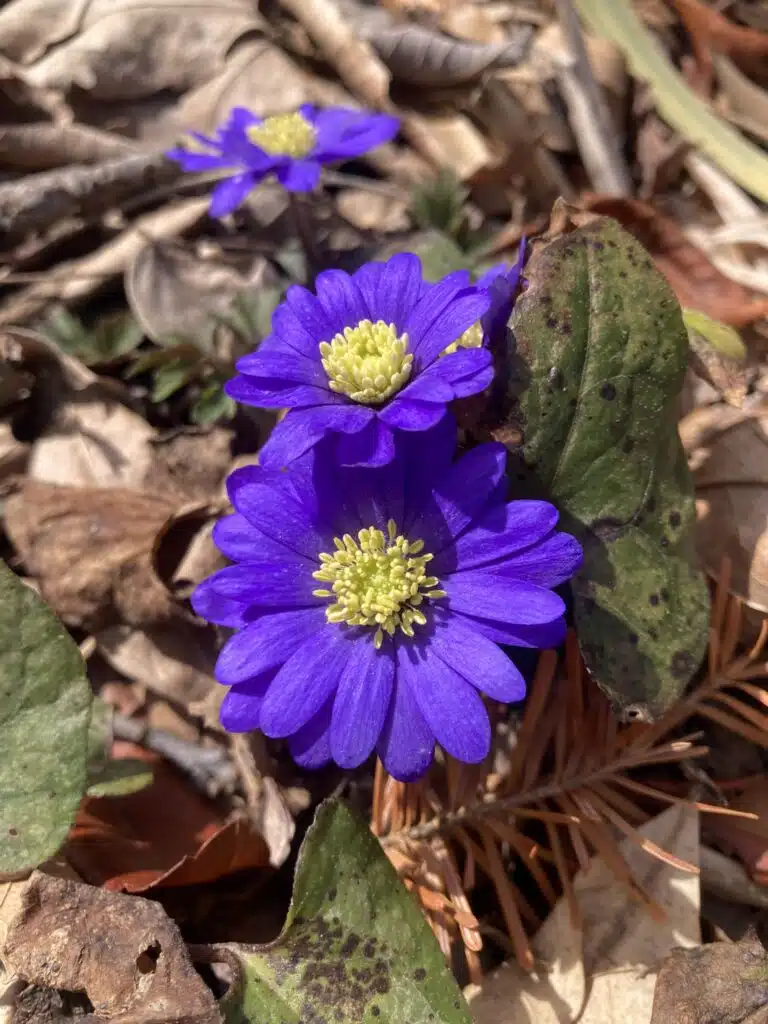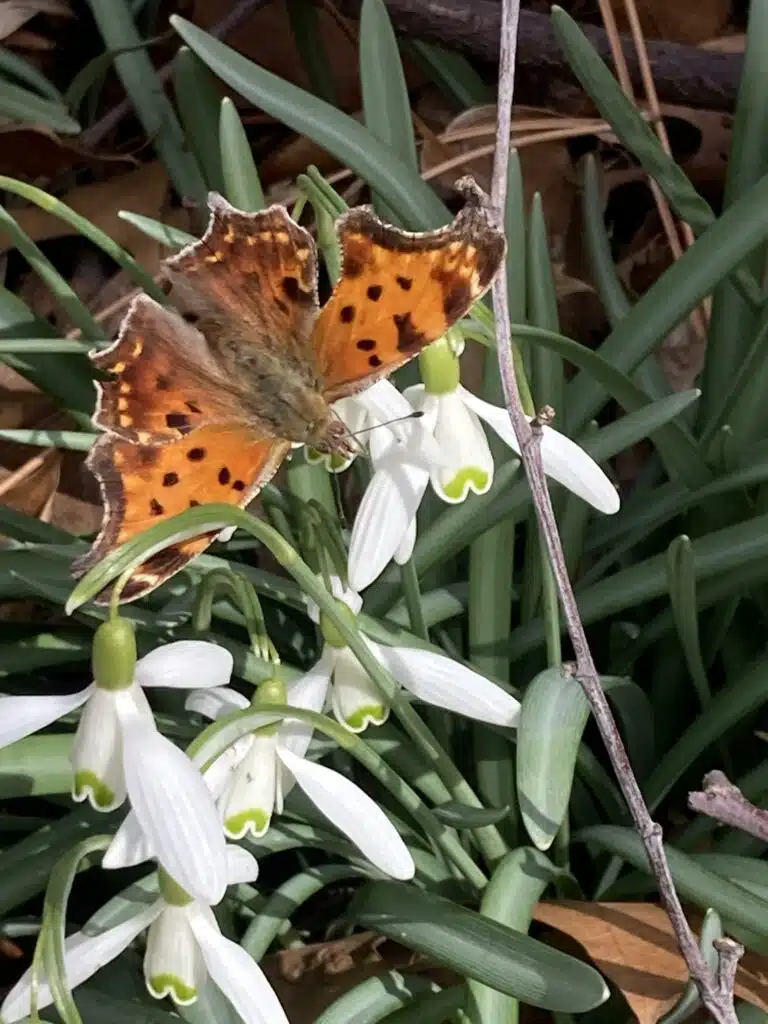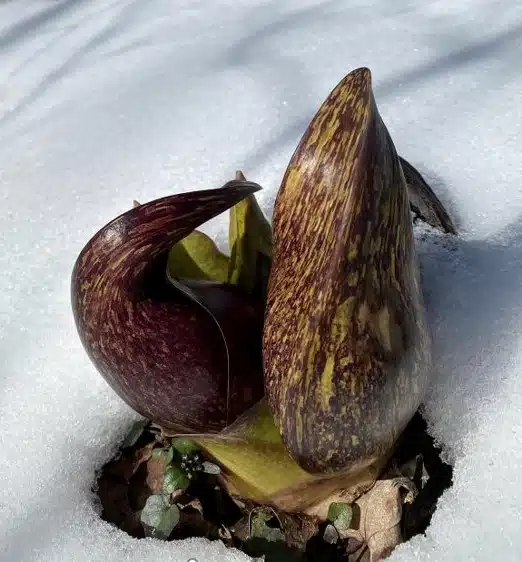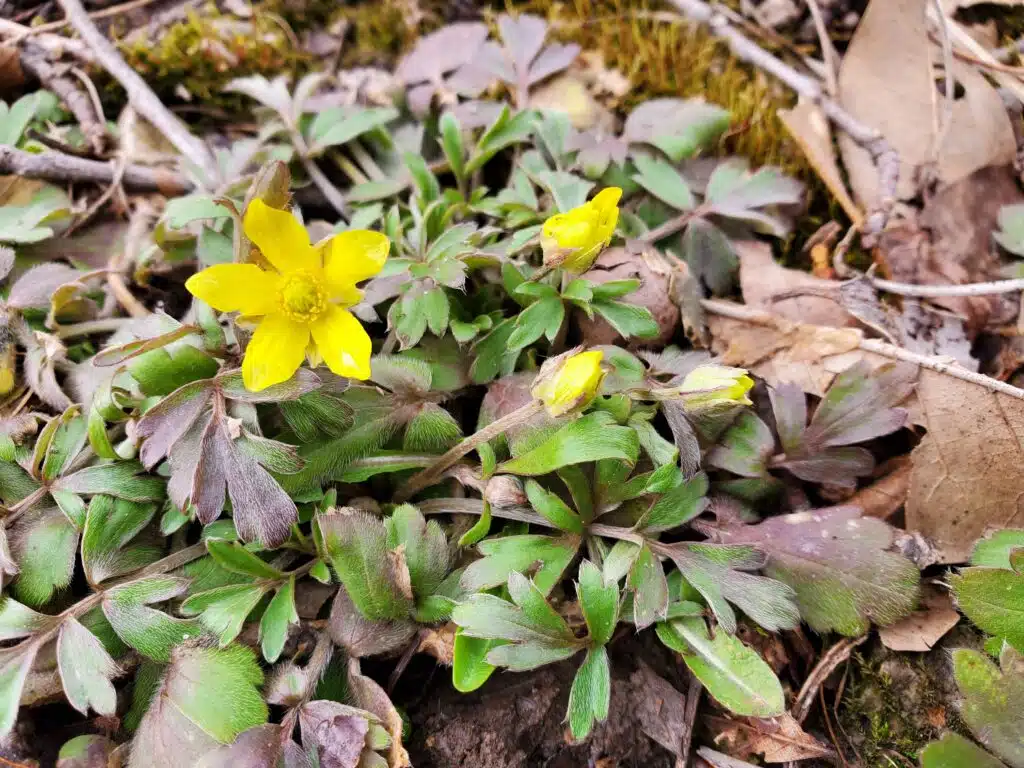
Winter Returns but Our Earliest Bloomers Are Still Going Strong
Winter returned to Northeast Ohio this week and we received several inches of snow at the Arboretum and a thin white blanket covered the garden as well. By Thursday, almost all had melted at the garden, and at each site, our early bloomers continue to shine despite the snow. These flowers have special adaptations to cope with the temperature swings they may experience.
Cleveland Botanical Garden
With temperatures above 50 degrees this Thursday, the garden saw several new bloomers, including a handful of daffodils. Look for the low-growing and tiny blue Grecian windflower in the restorative garden. Snowdrops are still blooming at scattered sites, but are particularly nice in the woodland garden at the edge of the Japanese garden. Thursday afternoon I spotted an eastern comma butterfly gathering nectar on the snow drop blossoms. This species overwinters as an adult and takes advantage of the nectar provided by the first spring blooms.


The Lenten rose and witch hazels remain on display throughout the garden, as are several cultivars of dwarf iris. Look for them scattered about, and don’t forget about the gateway garden in front of the main entrance. There are several beds of Lenten Rose there. If they are your thing, this weekend is the time to see them in full bloom.

The daffodils are ready to pop – a few right next to the building in the sunken garden should be opening as soon as we have a few days above fifty degrees. And finally, many of the garden’s tulips have broken ground, but we will need consistent high temperatures above 50 degrees before they begin to bloom. Also, another bit of progress is that several hyancinths are up and nearly ready to open. Look for them at the far end of the Geis terrace.


Holden Arboretum
Quite a bit of snow fell at the Arboretum, and this week we’ll focus on Ohio’s earliest blooming wildflower, skunk cabbage. Yes, the humble skunk cabbage, a native aroid, has a flower that only beetles and flies could love- it’s said to resemble animal flesh. But do appreciate its flowers, hornlike structures coming up out the ground, as they have a superpower called thermogenesis. The plants can produce excess energy through the breakdown of carbohydrates. This process heats up the flower and melts the snow around it.

A more traditional flower and very early bloomer that can now be seen in the wildflower garden’s limestone rockery is early buttercup- it’s coming up now. Also be on the lookout for the tiny magenta flowers of the American hazelnut along the stream. It’s one that difficult to spot, but once you do, you’ll never forget.

Throughout the Arboretum you can still find winter aconites, snow drops, Lenten rose and a host of dwarf irises, especially around the Corning visitor center, even though they were covered with a blanket of snow this week. The winter heath will also still be in bloom in the rhododendron discovery garden, as is the eastern sowbread on spruce knoll, which shined its magenta flowers right through the snow.

It’s Poppin’ is Holden Forests and Garden’s weekly report of what’s in bloom at the Holden Arboretum and Cleveland Botanical Garden. Use it to plan your weekly adventure to our campuses – be it a visit to the city, country, or both. Be sure to follow HF&G on Tiktok, Instagram and Facebook for more “it’s poppin” reports throughout the week.

Thomas Arbour
Curator of Living Collections
I grew up in northeast Ohio, graduating from Stow High School. I attended Hiram College, where I learned to love plants through the mentoring of Dr. Matt Hils. After Hiram, I obtained a Master of Environmental Science at Miami University, completing an internship with The ODNR Division of Natural Areas and Preserves in Columbus to help convert the Ohio Natural Heritage Database from paper maps to a GIS-based system. Over 20+ years, I worked with ODNR in central office in Columbus as a rare plant botanist, wildlife research technician, nature preserves administrator, and finally, the state trails administrator. In these positions, I had the opportunity to document many of Ohio's rarest plants and plant communities.













